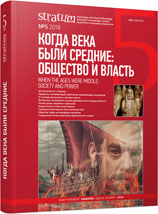Древнерусские пояса с накладками: социальный статус или традиция?
Viking Age Russian Belts with Mounts: a social status or a tradition?
Author(s): Irina E. ZaytsevaSubject(s): History, Archaeology, Middle Ages, 6th to 12th Centuries
Published by: Издательский дом Stratum, Университет «Высшая антропологическая школа»
Keywords: Medieval Russia; belt-sets; social status; tradition; alloys composition;
Summary/Abstract: The new data for the belt sets from the sites with surface cremations (10th — beginning of 11th centuries), located in North-Eastern Rus’ (Shekhovo, Krutik, Minino) allowed to re-examine the thesis of unconditional social, primarily military, status of the owners of decorated belts that had already been a common consent among the specialists. Apparently, the situation was more complicated: along with the actual distribution of belts with mounts among the warriors, we also notice a considerable popularity of these decorations among the ordinary Finno-Ugric and the mixed Slavic-Finnish population. Volga Bulgaria was a major center for the production of belt sets for these consumers. It is necessary to take into account the regional ethno-cultural characteristics of the various territories of the evolving Russian state.
Journal: Stratum plus. Археология и культурная антропология
- Issue Year: 2018
- Issue No: 5
- Page Range: 267-280
- Page Count: 14
- Language: Russian
- Content File-PDF

